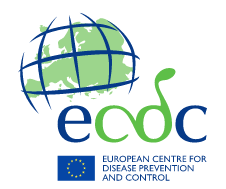This site provides INTERCEPT product information for International audiences Select your region
This site provides INTERCEPT product information for International audiences Select your region

The European Centre for Disease Prevention and Control (ECDC), in co-operation with the Italian National Blood Centre, organized an expert consultation meeting (April 2019) to discuss the potential role of pathogen inactivation technologies (PI) as a blood safety intervention during outbreaks of infectious diseases for which (in most cases) laboratory screening of blood donations is not available.
The meeting brought together 26 experts and representatives of national competent authorities for blood.
Summary of expert opinions1
Want to know more on the potential use of PI as a part of preparedness and response to threats posed to blood safety by outbreaks of emerging and re-emerging infectious diseases outbreaks (EID)?
Reference:
1Pathogen reduction of blood components during outbreaks of infectious diseases in the European Union: an expert from the ECDC consultation meeting; D. Domanovic et all.; Blood Transfus. 2019 Nov; 17(6): 433 - 448.
Want to stay updated on the latest pathogen inactivation news?
You can receive our highlights by subscribing to our newsletter.
Do you have questions about the INTERCEPT™ Blood System, blood safety or blood transfusions? The INTERCEPT team has plenty of knowledge and expertise.
The information on this site is not country-specific, and may contain information that is outside the approved indications for the country in which you are located.
Use of INTERCEPT Plasma or Platelets is contraindicated in patients with a history or allergic response to amotosalen or psoralens. Consult instructions for use for indications, contraindications, warnings, and precautions.
Cerus, INTERCEPT and the Cerus logo are trademarks of Cerus Corporation.
© 2023 Cerus Corporation. All Rights Reserved. MKT-EN 00157 v43.0